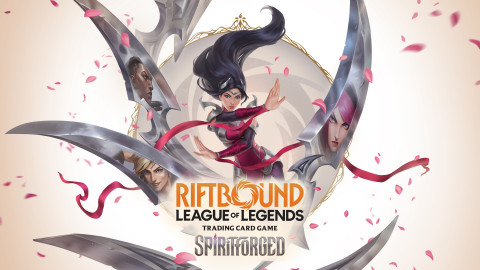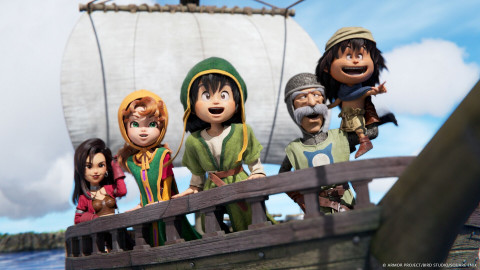
The Call of Duty series has been going off the rails for several years at this point, perpetually unsure of its identity and why players continue to return each November. Occasionally, this hasn’t affected the quality of a release – Advanced Warfare remains one of my favorite games in the entire franchise, with its mix of highly mobile combat and a straightforward, exciting campaign both satisfying longtime fans while also offering enough change for those who had lost interest. More often than not, however, the series’ recent trips into the future have been marred by something. In Black Ops II and Black Ops III, it was a spotty campaign with surprisingly bad level design. In Ghosts, it was a general sense of complacency across all of its modes. And in last year’s Infinite Warfare, it was a total disregard for the basic gunplay that made the original games so great.
Call of Duty: WWII, developed by Advanced Warfare studio Sledgehammer Games, was billed as a return to the classic “boots on the ground” gameplay seen in the Call of Duty games of yesteryear, eschewing the excess that had gradually crept into the series over the last decade. With Call of Duty: WWII, Sledgehammer has not only achieved its goal, but cemented its place as the best developer in Activision’s roster. It’s a game that understands why players love Call of Duty, and it’s confident enough in the series’ strengths to avoid needlessly altering the basic formula. That occasionally leads to a sense of déjà vu, but Call of Duty: WWII’s heartfelt narrative helps the game stand on its own.

European theatre
Last year’s Infinite Warfare and 2015’s Black Ops III both allowed for much more customization in their campaign modes, with players free to choose from a variety of missions, modify their gear loadouts, and even explore a hub area in between scripted moments. This made sense in a completely fictional futuristic scenario, as the writers were given more creative freedom, but in a real-world conflict like World War II, it simply wouldn’t have worked.
Sledgehammer wisely chose to drop this open-ended structure in favor of a linear campaign, primarily focusing on American Private Ronald “Red” Daniels and the 1st Infantry Division as they work to liberate Europe from the grip of the Third Reich. It’s here where we first get a sense of “been there, done that,” as the opening mission takes place on Normandy during D-Day, which is not only the setting for the famous first scene in Saving Private Ryan, but also 2005’s Call of Duty 2. What’s different here, however, is Sledgehammer’s unwavering view of violence. A soldier directly in front of you gets half his head blown off. Severed limbs and blood soak into the sand at the shoreline. Bodies pile up as they evacuate landing craft, leaving any survivors lucky to be alive. It’s something we didn’t see in previous World War II-era Call of Duty games, which often gave a sanitized, network television view of the horrors of war.
That isn’t to say the game consistently manages to provide the same sobering view of war we’ve seen in Saving Private Ryan or Band of Brothers – there are a few “Hollywood” moments in the campaign, particularly near the end, that turn Red Daniels into an action hero in a manner that seems to undermine the helplessness soldiers could feel when they learned the full extent of the Nazis’ atrocities. But these moments don’t lessen the impact of its surprisingly strong characterization, particularly concerning a troubled superior who Red often clashes with over the course of the story.

It isn’t just the plot where Call of Duty: WWII’s campaign succeeds, however. One of the biggest problems I had with Infinite Warfare was the jolting effect that occurred whenever you were hit by enemy fire during missions. It made lining up shots in the heat of battle almost impossible, and Sledgehammer has greatly reduced its severity in this year’s installment. Weapons like the M1 Garand and MP-40 have the appropriate amount of recoil and weight you’d expect from the era, and you’re given plenty of opportunities to put those guns to work over the course of the campaign. It’s a largely linear affair as you work with your squadmates to attack German positions or defend against counterattacks, but there are a few quiet scenarios that make for tense moments, and the addition of time-sensitive “heroic actions” gives quick-thinking players an opportunity to save other soldiers’ lives at several key points – while a little heavy-handed, it’s among the only times we’ve seen a Call of Duty game emphasize saving lives rather than taking them.
Better together
But multiplayer sees Call of Duty: WWII at its absolute strongest. Returning to the simple map design found in Infinity Ward’s early releases, you’ll no longer be shot in the back every three seconds from an enemy you had no chance of seeing. The standard team deathmatch option is engaging and tactical across all of its maps, often forcing teams to set up ambushes or flank the enemy to avoid being picked off by a machine gun or crack-shot sniper. If you’re able to line up a shot on an opponent and squeeze off a few rounds, you’re going to come out on top, and that’s something that Infinite Warfare’s ridiculously overwrought competitive mode couldn’t promise.
The biggest new mode this year is simply dubbed “War,” and is similar in design to the multi-stage Operations mode found in last year’s Battlefield 1. Kill-death ratio be damned, the mode tasks attackers with rushing an enemy base as they complete a series of objectives, such as destroying radio equipment, and it’s unlike anything I’ve seen in the series before, even if it lacks the same scale as Electronic Arts’ offering.

Microtransactions will soon make their way into Call of Duty: WWII as a way to more quickly earn the “supply drops” typically given out for completing challenges, but thus far I haven’t found the system particularly intrusive. These items are almost entirely cosmetic – I would occasionally get an experience boost in them, as well – and are awarded fairly regularly through normal play. All weapons, attachments, and abilities are still unlocked through standard play only and though the system is certainly too complex for its own good at this point, it lacks the overt cynicism and greed seen in competitor Star Wars Battlefront II.
I can’t say that Call of Duty: WWII is my favorite game in the series; the simplicity of Call of Duty 2 and the first two Modern Warfare games might never be topped. But Sledgehammer knows what made the series successful, and its knack for telling a story is undeniable. Given Activision’s three-developer cycle for Call of Duty, perhaps it’s wrong for me to be optimistic about next year’s installment, but I’ll be lining up on day-one for whatever Sledgehammer does next.

Disclaimer : The following article was written freely based on the author's opinion, and it may not necessarily represent Inven Global's editorial stance.
Sort by:
Comments :0






